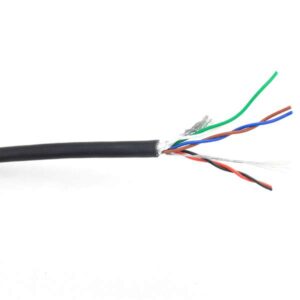Ⅰ.Introduce
The UL SIS cable standard is the latest cable standard released by the UL Cable Power Laboratory in the United States. This standard aims to ensure the safety of the power system and improve the reliability of the power system. The standard applies to a variety of cable types, including low-voltage cables, high-voltage cables and extra-high-voltage cables.
The main features of the UL SIS cable standard are safety and reliability. The safety of the power system refers to the safety of all components in the system, and the reliability refers to the reliability of all components in the system. The UL SIS cable standard applies to a variety of cable types, which helps improve system safety and reliability.

Ⅱ. Cable type
There are many types of UL Cable Power cables, mainly including low-voltage cables, high-voltage cables and special cables. Among them, special cables include combustible cables, polyethylene cables, fluororubber cables, flame-retardant cables, high-temperature cables, corrosion-resistant cables, and selection of conductor materials.
There are many types of cables, mainly low-voltage cables, high-voltage cables and special cables. Among them, special cables include combustible cables, polyethylene cables, fluororubber cables, flame-retardant cables, high-temperature cables, corrosion-resistant cables, and selection of conductor materials.
Ⅲ. Cable outer diameter
The outer diameter of the cable refers to the maximum diameter of the cable on the outside. According to different cable types, its outer diameter can have a certain range. For example, for shielded cables, the maximum outer diameter is usually 10-12mm. For high-voltage cables, the maximum outer diameter can reach 25mm.
Ⅳ. cable jacket material
The selection of UL Cable Power cable sheath material should be determined according to the use conditions and characteristics of the cable. Commonly used cable jacket materials are PVC, rubber, plastic, copper and aluminum alloys.
PVC is an inexpensive material with good weather resistance, but it is not resistant to chemical corrosion; rubber has excellent wear resistance and chemical resistance, but the cost is high; plastic has excellent chemical resistance and low cost. Copper and aluminum alloys are high-quality conductive materials with good chemical resistance, but are expensive.
Therefore, choosing the right cable jacket material is one of the key factors to ensure the service life of the cable.

Ⅴ. Cable usage characteristics
The use characteristics of the cable determine its suitability for a specific occasion. For example, the in-use characteristics of a cable may include durability, tensile strength, compressive strength, and temperature range.
For example, for a cable, its tensile and compressive strength must be known in order to use it in the right place. For example, if a cable is to be connected to a high voltage output port, the cable must have sufficient tensile and compressive strength.
On the other hand, if you want to connect a cable to a low voltage input port, the cable does not need to have high tensile and compressive strength.
Ⅵ. UL SIS Cable Standard
The UL SIS Cable standard is a cable standard issued by the UL laboratory in the United States to ensure the safe operation of power and communication systems. This standard applies to all workplaces, including residential, commercial and industrial.
The UL Cable Power standard requires that the performance of cables must meet certain standards to ensure the safe operation of power and communication systems. For example, the withstand voltage of the cable must exceed the voltage level used in the workplace.
Cable standards have clear requirements for different types of cables, such as metal conductor cables, which require sufficient strength and tensile strength. In addition, there are some additional requirements, such as the requirement for metal conductor cables to have good EMI scattering properties.
The UL SIS cable standard is one of the most comprehensive and stringent security standards for power and communication systems in the world.
Ⅶ. cable application
UL Cable Power is used in various fields, and its advantages are obvious. In industrial applications, cables can transmit large amounts of electrical energy; in homes, cables can connect various rooms in the home. The cable industry is developing rapidly, especially with the country’s emphasis on energy conservation and emission reduction and the low-carbon economy, the cable industry has ushered in a golden age.
In this context, Chinese cable manufacturers are facing unprecedented opportunities and challenges, but also ushered in greater development potential. According to statistics, the total number of domestic cable companies has reached more than 400, but very few can really participate in the international market competition. Facing the fierce competition and the fierce market environment, Anyte Cable manufacturers should make full use of their resource advantages.




